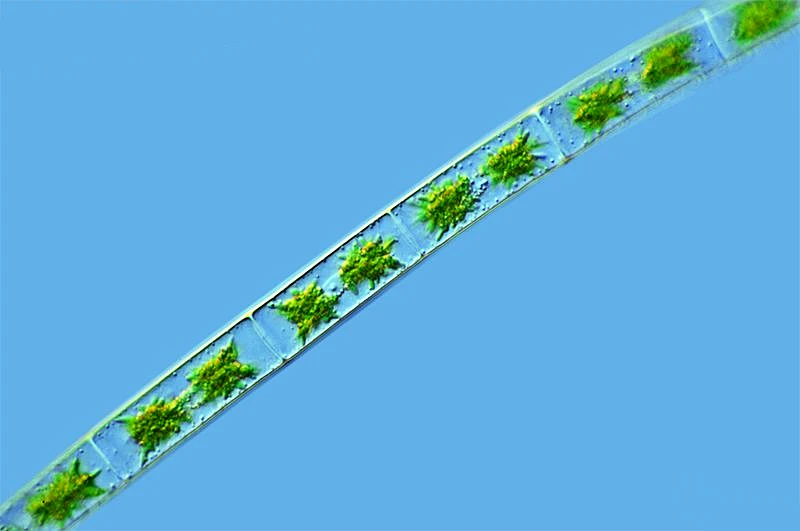Contents
ZYGNEMA
CLASSIFICATION OF ZYGNEMA
Sub-division :- Algae
Class :- Zygnematophyceae
Order :- Zygnematales (Conjugales)
Family :- Zygnemataceae
Genus :- Zygnema
Zygnema is widely distributed in stagnant/fresh water ponds and streams. It may form either floating masses or scum on the water surface. It is generally found in
reproductive stages during spring.

THALLUS AND A CELL OF ZYGNEMA
- The thallus is multicellular and filamentous.
- Filaments are uniseriate (composed of many cells in a row) and unbranched.
- Each cell of a filament is cylindrical, length being not usually more than twice the breadth.
- The cells are generally covered by a large amount of mucilage.
- The transverse wall of the cell is thin while the lateral wall is thick (because of the thick pectose deposition).
- The cells are filled with large amount of cytoplasm.
- The most characterstics of the cell is the presence of two axile and stellate chloroplasts, arranged along the longitudinal axis of the cell.
- Each chloroplast sends out thin or thick, laterally radiating strands which sometimes extend up to the cell wall.
- A single pyrenoid is located centrally in each of the chloroplasts.
- Cells are uninucleate. Nucleus is centrally located between the two stellate chloroplasts which lie on both of its sides. Nucleus is surrounded by a thick and broad strands of cytoplasm.
SCALARIFORM CONJUGATION IN ZYGNEMA
- Sexual reproduction takes place by conjugation.
- Each cell of the filament forms non-motile gamete.
- Two filaments take part in this process. Thus the species showing scalariform conjugation are heterothallic.
- Two filaments lie opposite one another throughout their whole length.
- Each cell produces a conjugation tube towards the opposite cell of another filament.
- Protoplasts are contracted, rounded or elliptical in shape, and are called gametes.
- Gametes migrate from one gametangium to another during fusion. Thus cells of both threads are completely empty (because gametes generally fuse in conjugation tube). In other species zygospores occupy gametangium of one filament, leaving cells of the other filament empty.
- A young zygospore has four stellate chloroplasts. Completely mature zygospore has thick, three-layered, ornamented and coloured (blue) wall

LATERAL CONJUGATION IN ZYGNEMA
- Lateral conjugation is comparatively rare.
- Both male and female gametes are produced by the same filament. Hence, the species are called homothallic.
- The cells or male and female gametangia produce a small conjugation tube each near the cross wall common to both these cells.
- Both male and the female gametes creep into the conjugation tube where these fuse.
- Both, male and female cells become empty, the zygospore being formed inside the conjugation tube.
- Zygospore is ornamented or smooth. The wall is three layered and may also be coloured.

IDENTIFICATION
- Sub-division– Algae
- Presence of a simple thallus.
- Chlorophyll present
- Cell wall made of cellulose.
- Class – Chlorophyceae
- Presence of a definite nucleus
- Chloroplast present. grass green colour
- Presence of starch
- Reproductive structure motile and flagella equal in length.
- Order – Zygnematales
- Absence of flagellated reproductive cells.
- Sexual reproduction (conjugation) by amoeboid gametes.
- Family – Zygnemataceae
- Unbranched and uniseriate filaments.
- Chloroplasts either parietal and ribbon shaped or single/two, axial and stellate.
- Genus – Zygnema
- Two axial chloroplasts per cell.
- Zygospores in the conjugation tubes
- Conjugating cells not filled with gelatinous material.

REFERENCES :-


Leave a Reply